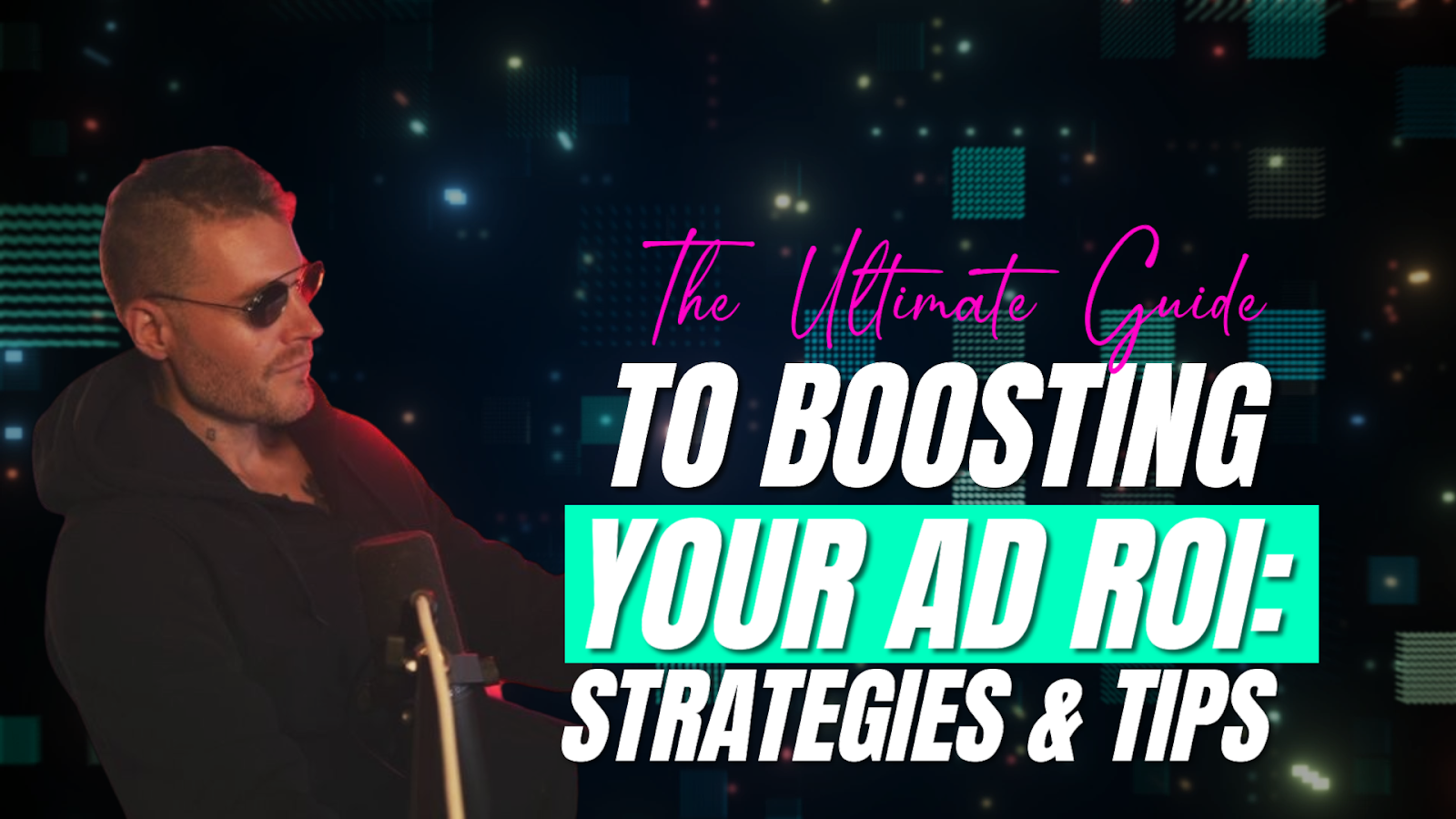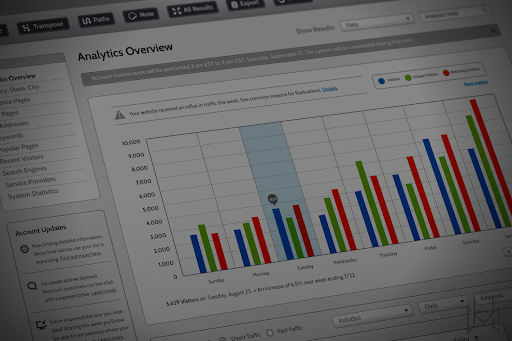
The Ultimate Guide to Boosting Your AD ROI: Strategies and Tips
Return on investment refers to the amount of money an investment brings in compared to how much the investment cost. To calculate ROI, divide the net income by the investment cost. Multiply the result by 100 to get it as a percentage.
Advertising is a powerful tool for any business to increase conversions and reach new audiences. However, creating effective ad campaigns that generate a positive ROI can be challenging, especially for new and small brands. With many platforms, ad formats, and ways to target audiences, it’s difficult to know where to start.
This comprehensive guide will explain five practices to help you create effective ad campaigns that generate a positive ROI.
1. Understanding your target audience
Your efforts to boost ROI begin with reaching the right audience. Many businesses lose money when trying to appeal to demographics with no interest in their niche. Let’s look at a few ways you can gather information about the audience you should target.
Market research surveys
You can conduct online and offline surveys to gather quantitative data about your target audience’s behavior. Online tools such as Google Forms, Typeform, and SurveyMonkey are excellent ways to create and distribute surveys.
Website analytics

Analytics tools such as Google Analytics and Adobe Analytics help you track an audience’s behavior on your website. These tools tell you where they come from, the pages they visit, and how long they stay on them. You can use this information to create ads around their preferences.
Social media insights
Social media platforms like Facebook and Instagram provide analytics about an audience’s engagement with your ads. These platforms use metrics such as likes, shares, and comments to determine people’s interests and which ads to display.
Review customer data
Analyze information about your current and previous customers to help you determine the ads that work. Data to analyze include purchase history, customer feedback, and customer service interactions. You can learn what features they had a keen interest in and focus on them in your ads.
Your competitors
Your direct competitors are likely to serve the same audience you’re targeting. Analyze their customer base, advertising campaigns, and social media presence to determine how they attract their audience. You can copy or improve on their strategies.
Tips for tailoring your ad message to your target audience
Focus on your audience’s pain points
A pain point is the problem your product or service looks to solve. You should identify your audience’s problem through the research methods in the previous section. Empathize with their problems and tailor an ad that depicts your product as their only solution.
Use visual elements
Videos, animations, and images attract people more than text. Incorporate high-quality visuals that communicate your message at a glance. Visuals also make your ads memorable long after people view them.
Use the right tone
An ad’s tone can convey a message on its own. Determine whether you want your ad to be funny, informative, or professional beforehand.
Personalize your message
Personalizing an ad makes it relevant to a specific demographic. As a result, personalization makes people interact with an ad more. To create relevance, mention an audience’s location and name or use purchase history to personalize recommendations.
2. Creating compelling ad content

An effective ad is essential to grab an audience’s attention. A compelling ad maximizes returns by increasing conversions. Several elements work together to make an ad memorable, engaging, and relevant. Here are vital elements your ad content should have.
Clear messaging
An ad should immediately tell your audience the product or services you’re providing. Your ad should also be brief to communicate your message to readers scanning your content.
Attention-grabbing headline
Often, your audience reads the ad’s headline first before the body. Your headline should create interest. Including actionable words, discount details, or a benefit is a perfect way to make a headline stand out.
Unique value proposition (UVP)
A UVP is a clear statement that shows why you’re different from the competition. It should be front and center in your ad content and explain how your product addresses your audience’s pain points. See some popular brands’ value propositions and use them as a guide to craft yours.
Social proof
In ads, social proof exists through reviews, testimonials, and referrals. People love seeing satisfied customers who enjoy a product or service. Additionally, they use evidence of a satisfied customer as an incentive to purchase. Social proof builds credibility and an audience’s trust in your brand.
Attention to detail
A professional ad is free from grammar, punctuation, and formatting errors. It helps to have several marketing professionals on your team to oversee your ad.
Tips for writing persuasive ad copy
Highlight benefits, not just features
Often, people dismiss ads that list technical specifications. While that information is useful, it could be more compelling. Additionally, your competitors are listing similar features on their products and services.
Detail what your product or service can do for your audience. Doing so allows people to visualize themselves using your brand to solve problems.
Create urgency

In a case study by CLX, a CTA that reads “download this contract now!” got 147% more conversions than one reading “download this contract.” The word “now” implies a reader will miss out if they don’t take action.
Have you heard of FOMO? The abbreviation means “fear of missing out.” People are more likely to respond to an ad if they feel a product is scarce and will feel excluded. Use “limited time offer” and “only a few left in stock” to create a compelling ad copy.
Use emotional triggers
Everybody’s emotions influence them to do certain things, and engaging with your ad is one of them. Emotional triggers help your audience connect with your brand. Draw inspiration from this list of powerful words to trigger feelings such as curiosity, nostalgia, and excitement.
Make your CTA direct
A compelling ad copy has a CTA that tells an audience what to do next. A direct CTA is easy to scan, even for readers who ignore the ad. An excellent tip is to keep your CTA under seven words. Use phrases like “Buy Now” and “Sign Up Today” to funnel your audience’s actions.
Use simple language
Your goal when creating an ad should be to appeal to everyone, regardless of education level. This goal means that your ad’s language should be simple and concise. Avoid jargon unless your ad targets an audience from a specific industry with a single common interest.
Best practices for designing eye-catching ad visuals
Use Typography
Typography is the art of arranging letters in a visually appealing way. Your ad’s text plays a significant role in attracting attention. Here are some nifty tips to follow when choosing your ad’s typography.
- Select a typeface that creates a hierarchy. For example, a bold font works well in titles, and an elegant thin font looks better in the ad’s body.
- Avoid using multiple fonts. Doing so makes your ad look crowded and challenging to read.
- Use high contrast to make the text easier to read. A white background boosts the legibility of black text and vice versa.
- Avoid including many different colors because they make your ads overwhelming to follow.
Choose bold and contrasting colors
Colors are vital in grabbing your audience’s attention and creating emotions. Additionally, an audience can immediately recognize a brand because of the color in an ad.
Mountain Vista Psychology has a helpful guide on different colors and the emotions they invoke.
Show your product or service in action
Demonstrate how your product works in video or pictures. People are more likely to convert from an ad that tells them how to use a product or service without looking for other tutorials.
3. Selecting the right ad platform
Many advertising platforms exist, each supporting different ad formats and targeting different demographics. The top paid advertising platforms show varying analytics to help you monitor your campaigns. Let’s go over factors to consider when choosing a platform.
Ad targeting
Look at the targeting options available in each platform before choosing. Some platforms allow you to target audiences based on location, behavior, and specific interests.
Budget
Compare the cost of running business accounts on different platforms. Additionally, consider the cost of creating and tracking ad analytics. Some platforms are more expensive but offer better targeting options or engagement rates.
Ad format
Consider whether a platform’s primary format aligns with your brand and advertising goals. Platforms like Instagram are excellent for picture-based ads, while YouTube works best for longer video ads.
Competition
Research the level of competition on each platform. Some platforms are oversaturated with your competitors’ ads, thus making it hard for you to stand out.
Analytics
Consider the analytics each platform presents to you before choosing. Select platforms with the most detailed metrics because they inform you of your ad’s performance and help you make data-driven decisions.
4. Optimizing your ad campaign
Your ad’s ROI will worsen if you don’t keep track of its performance. These metrics will help you decide the effectiveness of your ads and whether they are worth spending on.
Reach
This metric refers to the number of people who saw your ad in a specific period. Reach is a great way to determine whether your targeting strategies are effective.
Click-through rate (CTR)
This metric refers to the number of people who clicked your ad after seeing it. To determine CTR, divide your ad’s clicks by its impressions. A high CTR provides benefits such as reduced cost-per-click and better ad placement.
Conversion rate
This metric refers to the number of people who performed a desired action on your website after clicking your ad. Conversion rates are beneficial if your advertising goal is to increase sales.
Cost Per Click (CPC)
CPC refers to the average cost when someone clicks your ad on the SERP. This metric is specific to paid advertising, and Google’s algorithm determines the cost per click.
5. Maximizing your ad budget efficiency
Your ad budget is a vital factor in determining your ROI. Staying within the budget ensures you don’t overspend unless an ad performs excessively well and requires additional investment. Here are some factors to consider when determining an ad budget.
Expected ROI
Your expected return on investment informs your ad campaign’s budget. If you expect a significant ROI, you should be willing to spend more on advertising.
Target audience
Consider the size and demographic of your target audience when setting a budget. The larger the audience, the more it will cost to reach. Remember to consider the level of competition for an audience’s attention on different platforms. You may have to spend more to stand out if competition is high.
Advertising channels
Different ad channels have different pricing models. For example, advertising on Google Ads costs more than on Facebook but yields more organic traffic.
Ad format
Video ads cost more to create, edit and publish but more effectively drive conversions. Image ads require a budget to source and optimize. Text-based ads cost the least to produce.
Competition
The budgets of competitors influence your budget. If your competitors are spending heavily on advertising, you may have to allocate more in your budget to keep up.
Tips for optimizing your ad spend for maximum ROI
Set a budget
This obvious tip is surprisingly helpful in optimizing ad spend. A budget helps you estimate your ROI. Additionally, a budget is an indicator of your campaign’s performance.
What does this mean? A campaign that goes over budget without yielding maximum ROI helps you decide whether to adopt a new strategy.
Use ad retargeting
What is retargeting? This form of advertising involves serving audiences who have visited your website or interacted with previous ads. This demographic is already familiar with your brand, and retargeting helps increase conversions and maximize your ad spend.
Automate your bids
Automated bidding strategies like Google Smart Bidding optimize ad bids based on your advertising goals. The tool uses machine learning to determine how bid amounts impact ad performance. Automation helps you control your ad spend for maximum ROI.
Monitor your ad performance
Keeping track of your ad’s metrics allows you to stay within budget. These analytics inform you which ads are performing well, thus worth investing more in. Use Google Analytics to monitor metrics such as click-through rates and cost-per-acquisition.
Conclusion
Return on investment is an essential consideration for any ad campaign. Maximizing it requires the utmost understanding of your target audience. Your audience will inform your campaign’s structure and budget. To capture attention, create compelling ad content and publish it on the right platforms.
You need to monitor your ad’s performance to keep track of your spending. ROI depends on how well you optimize your campaigns to ensure you bring in more than you spend. Use this article’s tips to boost your ad ROI and instantly realize profits.
